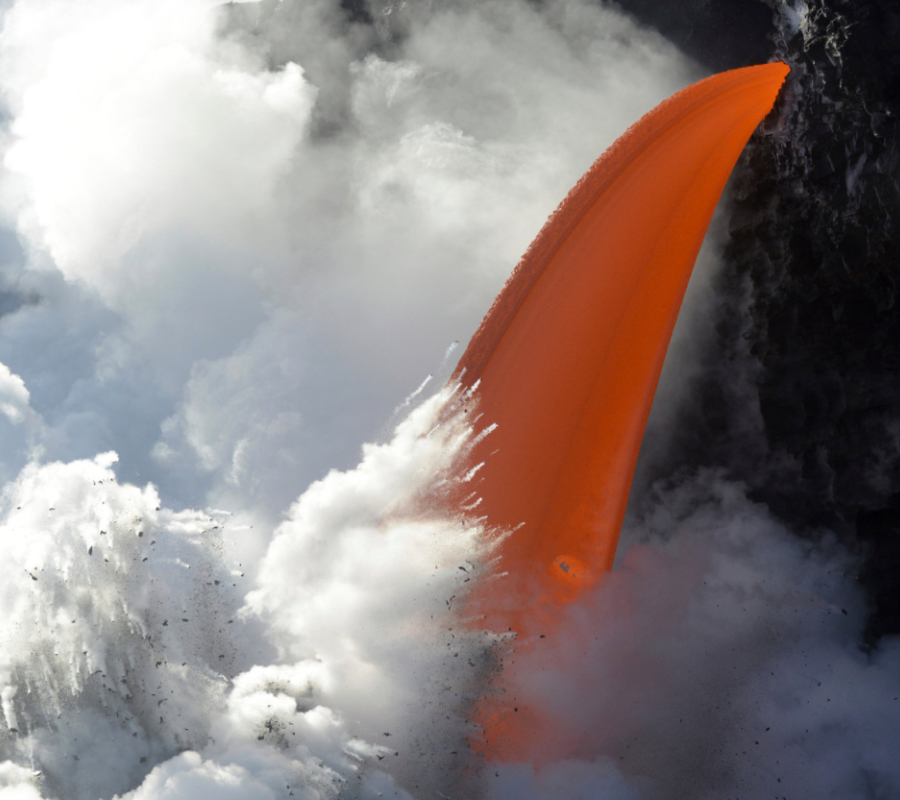A newly released footage shows a major lava explosion registered in Hawaii Volcanoes National Park. The lava is currently traveling toward the ocean that surrounds the Hawaiian ground.
The Kilauea volcano located close to the Kamokuna ocean entry started shooting lava as it began the formation of black clouds composed by ashes, according to the U.S. Geological Survey. Below the cloud, the lava started to mix with the water, cooling down and generating rubble. This lava expansion has been occurring since a month ago, producing a constant gush of the lava in the ocean water, almost 100 feet below the surface.

“The only thing we can surmise is the offshore topography apparently is so steep that, as the lava is flowing in and forming all this new rubble, it’s just slipping down into deeper parts of the ocean and not piling up to form a new delta,” said Janet Babb, a geologist at the United States Geological Survey Hawaiian Volcano Observatory, who monitors the volcano. “Lava will continue to flow into the ocean until it’s disrupted.”
Impressive steam explosions registered by locals and tourists
Every time the lava formation gets in contact with cold water, there is an impressive steam explosion. The images recorded by people nearby show a big bag of red paint that explodes in the air. Considerable amounts of ash, debris, and gas are released in plumes of steam that surround the explosion.
Several kinds of lava tubes keep feeding the lava flows like veins in the human bloodstream system. Scientists specialized in volcanoes flew over the affected area with a thermal camera and found a new crack above the sea cliff of one the lava tubes, as the temperature registered got to 430 degrees Fahrenheit.
The Kilauea Volcano in Hawaii Volcanoes National Park is one of the most active ones recorded by volcanologists, as it has regularly been erupting for the last 30 years. The volcano also has about 200 structures in its system as the presence of a steaming caldera topped with lava dubbed Halema’uma’u.
On New Year’s Eve, the U.S. Geological Survey registered an expected collapse of the volcano’s delta as the amount of lava was exorbitating. Ms. Babb explained that these lava deltas were usually very unstable as they are composed mainly by rubble.
This delta collapse produced the crumbling of nearly 4 acres of sea cliffs that fell into the ocean, specifically in an area that is visited by thousands of tourists and Hawaiians. When the guards of the area noticed the crumbling, they started the evacuation procedure to ensure the safeguard of all the persons present at the place.
To this day, all nearby areas to the volcano and lava contaminated ocean zones are closed to the public. Ms. Babb stated that she is very thankful for the fact that nobody got injured.
Researchers have reported that other unstable deltas could endanger the situation of near sea cliffs as more observations will be made to know if any collapse could happen and when.
Source: The New York Times
